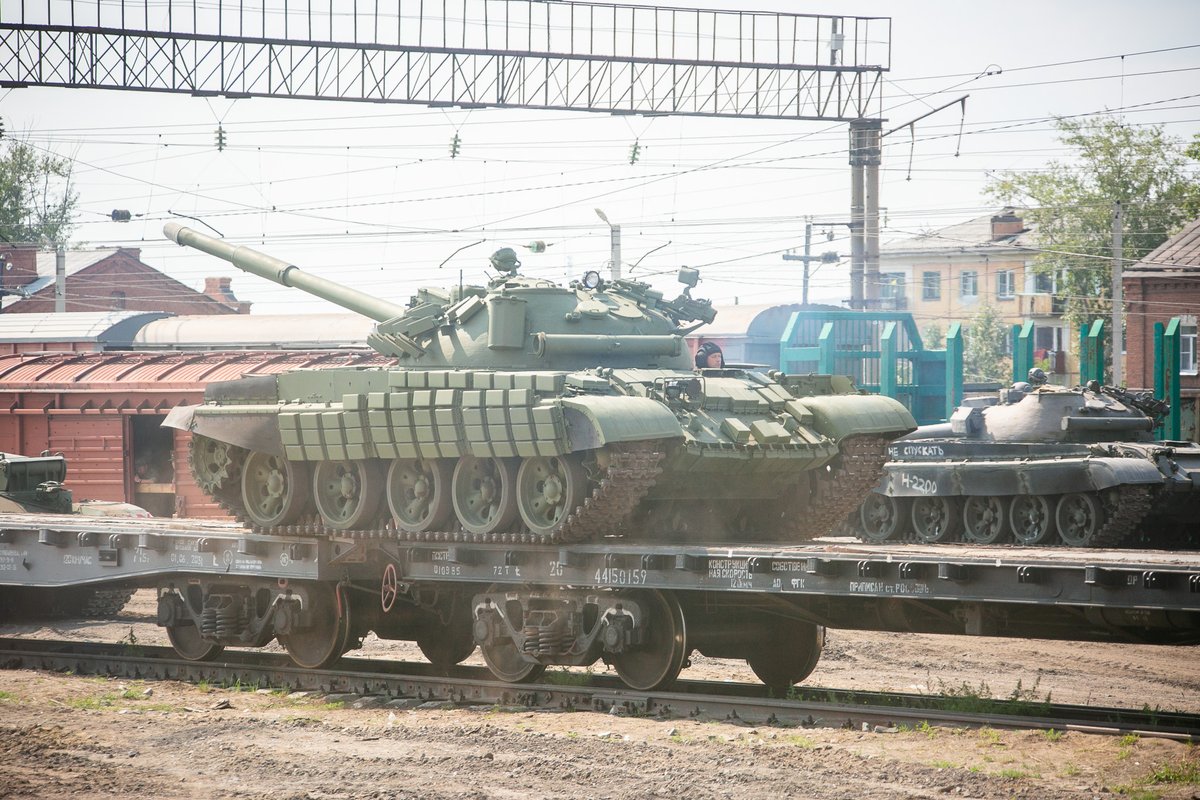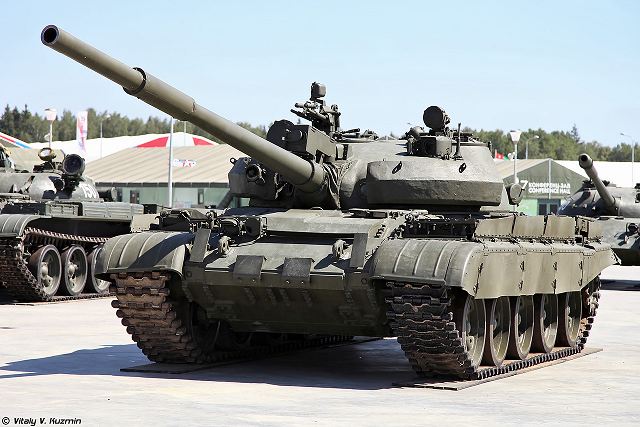
Some more information has emerged on Russia's apparent deployment of 40-year-old T-62M and T-62MV tanks to southern Ukraine. /1
The Zaporizhzhia Regional Administration has confirmed that T-62s have arrived in Melitopol. The regional governor, Oleksandr Starukh, says the Russians intended to use them not as frontline fighting vehicles but as dug-in stationary firing points. /2 t.me/zoda_gov_ua/83…
If so, this would mirror a tactic used by Saddam Hussein's Iraq in which dug-in tanks were used effectively as heavily-armed pillboxes. However, it failed in Iraq due to US air power. Ukrainian drones can cause similar problems for T-62s - the roof armour is only 40 mm thick. /3 

Ukraine's R18 octocopter drones drop adapted RKG-3 anti-tank grenades which are capable of penetrating between 175-220 mm of armour. They've destroyed T-72s without too much difficulty, so stationary T-62s should be easy targets. /4 

It should be noted though that the Ukrainian general staff posted today that "to make up for the losses, the enemy reinforces the group with obsolete weapons and military equipment, in particular, T-62 and BMP-1 tanks." facebook.com/profile/100069… /5
This apparently in reference to the Kherson/Zaporizhzhia region, which would be consistent with the reports from Melitopol. So it's quite possible that at least some of the T-62s are intended to remain mobile as a reserve force - rather a desperate measure. /6
Starukh is confident that the Ukrainians will cope with the arrival of the T-62s: "Knowing the Russians, they can find idiots who will drive those vehicles to their deaths. It's not a problem for our guys." /end
@OSINTEng @Militarylandnet @RALee85 @War_Mapper @Blue_Sauron @Osinttechnical @oryxspioenkop @TrentTelenko @MarkHertling @DomNicholls @Nrg8000 @UAWeapons @TrueFactsStated @WarintheFuture @KofmanMichael @michaeldweiss @aravosis @JoshManning23 @general_ben @tomiahonen
• • •
Missing some Tweet in this thread? You can try to
force a refresh











